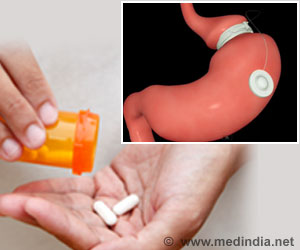Researchers aim to uncover the neural circuitry responsible for the rise in appetite induced by cold temperatures.

Xiphoid nucleus of the midline thalamus controls cold-induced food seeking
Go to source). Mammals automatically burn more energy to maintain normal body temperature when exposed to //cold. This cold-activated increase in energy expenditure triggers an increase in appetite and feeding, although the specific mechanism controlling this had been unknown.
‘Scripps Research scientists’ discovery could lead to new weight loss and metabolic health treatments.’





“This is a fundamental adaptive mechanism in mammals and targeting it with future treatments might allow the enhancement of the metabolic benefits of cold or other forms of fat burning,” says study senior author Li Ye, PhD, associate professor and the Abide-Vividion Chair in Chemistry and Chemical Biology at Scripps Research. The study’s first author was Ye Lab postdoctoral research associate Neeraj Lal, PhD.
Cold Exposure and Weight Loss
Because exposure to cold leads to enhanced energy burning to stay warm, cold water immersion and other forms of “cold therapy” have been explored as methods for losing weight and improving metabolic health. One drawback of cold therapies is that humans’ evolved responses to cold are not designed to cause weight loss (an effect that could have been fatal during the frequent periods of food scarcity in pre-modern times). Cold, like dieting and exercise, increases appetite to counteract any weight-loss effect.One of their first observations was that, with the onset of cold temperatures (from 73F to 39F), mice increase their food seeking only after a delay of about six hours, suggesting this behavioral change is not simply a direct result of cold sensing.
Using techniques called whole-brain clearing and light sheet microscopy, the researchers compared the activity of neurons across the brain during cold versus warm conditions. Soon they made a key observation: While most of the neuronal activity across the brain was much lower in the cold condition, portions of a region called the thalamus showed higher activation.
Eventually, the team zeroed in on a specific cluster of neurons called the xiphoid nucleus of the midline thalamus, showing that activity in these neurons spiked under cold conditions just before the mice stirred from their cold-induced torpor to look for food. When less food was available at the onset of the cold condition, the activity increase in the xiphoid nucleus was even greater—suggesting that these neurons respond to a cold-induced energy deficit rather than cold itself.
Advertisement
In a last set of experiments, the team showed that these xiphoid nucleus neurons project to a brain region called the nucleus accumbens—an area long known for its role in integrating reward and aversion signals to guide behavior, including feeding behavior.
Advertisement
“One of our key goals now is to figure out how to decouple the appetite increase from the energy-expenditure increase,” he says. “We also want to find out if this cold-induced appetite-increase mechanism is part of a broader mechanism the body uses to compensate for extra energy expenditure, for example after exercise.”
Reference:
- Xiphoid nucleus of the midline thalamus controls cold-induced food seeking - (https://www.nature.com/articles/s41586-023-06430-9)















